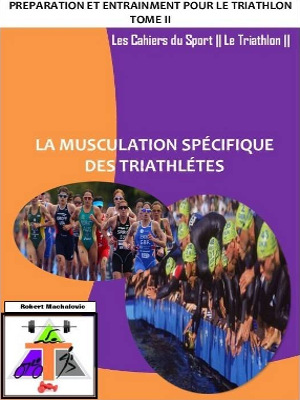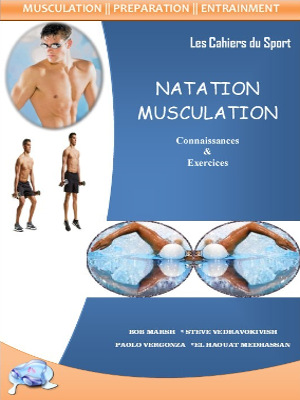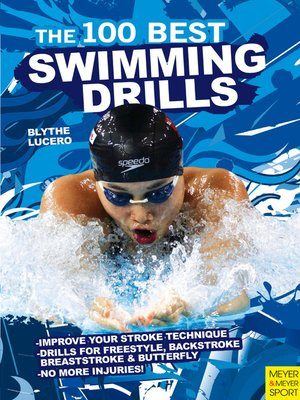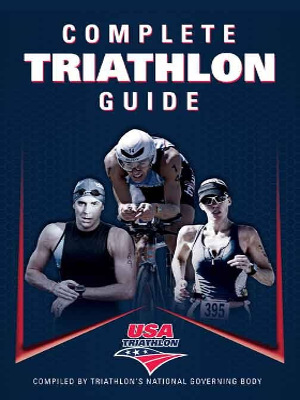
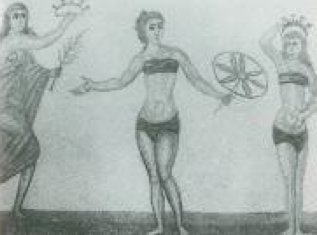
The beginnings of sports swimming were related to endurance. The first stimulus came probably from Lord Byron who verified the tale about Leander by swimming across the Dardanelles. In 1875, Captain Webb swam across the English Channel in 21 hours 45 minutes. In 1860s, first swimming clubs were founded in London. People mostly swam in distance competitions across straits or wider rivers. A well-known competition was Quer Paris. The first match in water polo was played in 1869. Diving as a discipline started to develop in an unorganized way but at the beginning of the 20th Century, diving equipment became standardized. Underwater diving was also very popular – there were competitions in distance, speed as well as the duration of the stay under water. Swimming was part of the program of the first Olympic Games – swimming without any distinguishing in style for 100, 500 and 1,200 m. The winning time for 100m was 1:22.2. Unusual disciplines at the Olympic Games: in 1900 underwater swimming was included (the winner swam 60m), in 1904 a competition in the length of the racing dive with floating (the winning dive was 19.5m). At the 1900 Olympic Games swimmers competed in backstroke; water polo was also included. At the 1904 Olympics there was a competition in breaststroke and diving from a three-meter board. In 1906 swimming disciplines were officially divided into backstroke, breaststroke and free style. At the 1912 Olympics, there were also women swimmers. Gradually, there was a number of changes: other disciplines were included and in 1956, also the fourth swimming style – the butterfly. The biggest number of disciplines traces back to the 1968 Olympics. Swimming is now a sport with the highest number of medals awarded.
In 1908 the International Swimming Federation was founded – Federation Internationale de Natation Amateur. Since 1926 there has been a European Championship in swimming; since 1973 also the World Championship.
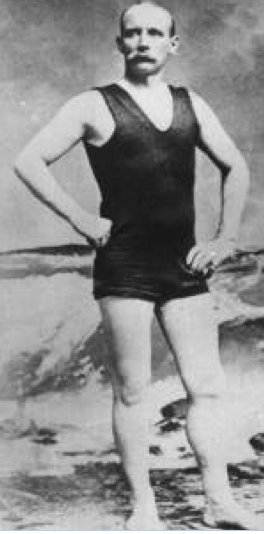
Matthew Webb

Johny Weissmüller
Johny Weissmüller who was the winner for five times (three times at 1924 Olympics) and the first swimmer in the World to swim 100m in less than one minute. Later, he became famous as the first actor to play Tarzan.
Crawl Style
Body position
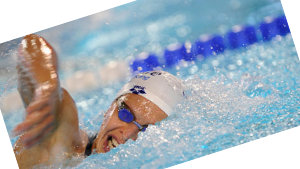 We must attempt to reach the flowline shape and efficient use of power. Body position in crawl should be as flowline as possible but the legs must be dived in such a way to make them work efficiently. An optimum dive of the head is up to hair roots. Raising and lowering the body must be avoided as well as wagging the body from side to side – the third Newton law must be applied. Most frequently, this is caused by moving the arms in a wide arch, hand stroke is far from the longitudinal body axis and the head is diverged to the side. Shoulder axis is turned crosswise – it makes it easier to move the arms and breathe; in the stroke climax, the force acts the most below the longitudinal body axis.
We must attempt to reach the flowline shape and efficient use of power. Body position in crawl should be as flowline as possible but the legs must be dived in such a way to make them work efficiently. An optimum dive of the head is up to hair roots. Raising and lowering the body must be avoided as well as wagging the body from side to side – the third Newton law must be applied. Most frequently, this is caused by moving the arms in a wide arch, hand stroke is far from the longitudinal body axis and the head is diverged to the side. Shoulder axis is turned crosswise – it makes it easier to move the arms and breathe; in the stroke climax, the force acts the most below the longitudinal body axis.
Legs
Legs are of secondary significance in crawl – correct leg movement mainly secures the optimum overall position. At speeds above 1.5 meters per second (i.e. 100m in less than approx. 1:07), legs are not able to contribute to speed increase. Six-stroke kick is used (rarely two-stroke in endurance swimming). The range of the kick is 25-40cm. The kick must not be too intensive. Legs cannot be bent in knees. Legs cannot get above the water; they only whirl slightly under the surface.
Arms
Working with arms can be divided into a stroke stage and a recovery stage.
Stroke stage:
- hand is immersed into the water sooner that the remaining part of the arm, palm is held crossways downwards
- diving the hand in standard scope
- gradual rise in stroke force
- arms must stroke considerably faster backwards than we swim forwards
- stroke with bent elbow
- hand is under the face, fingers under longitudinal body axis
Recovery stage:
- at the end of the stroke, active pressure is ended and the hand is passively pulled out of the water just like a hand from a pocket
- the elbow comes up first
- elbow is positioned high during recovery
- acute angle between the forearm and upper arm
- relaxing the arm muscles during recovery
- at the end of recovery, the forearm swivels forward and the arm is almost stretched
Breathing technique
The swimmer must turn the head only by turning the neck around its longitudinal axis. The swimmer must not bend the head backwards or raise it.
On long tracks once per each arm cycle.
On medium tracks once per each third stroke (on both sides).
Sprinters – irregularly and in 50m very little and only in the second half of the track.
In one breach, usually ¾ l of air is inhaled and exhaled.
Exhalation – the air should be let out through the mouth and nose continuously. It is the most intense when the mouth comes close to the surface.
Breaststroke Style
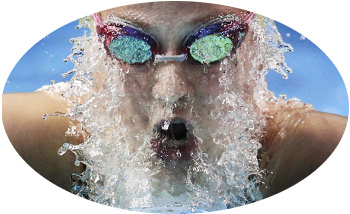 Breaststroke is the oldest swimming style. This technique has been described in the oldest books on swimming. Therefore, it is referred to as the classic style. Even though the current technique differs from the original one a lot, it is still only little effective. This is due to very restrictive rules for this style. The original technique was so-called wedge technique (kick in three strokes). Since mid-1930s, narrower and accelerated kick is used – the whip.
Breaststroke is the oldest swimming style. This technique has been described in the oldest books on swimming. Therefore, it is referred to as the classic style. Even though the current technique differs from the original one a lot, it is still only little effective. This is due to very restrictive rules for this style. The original technique was so-called wedge technique (kick in three strokes). Since mid-1930s, narrower and accelerated kick is used – the whip.
Body positions
During arm stroke, the angle of the position of the swimmer increases – it reaches maximum at the time of breathing in and is in the scope 10-30 degrees. After inhalation, the swimmer goes quickly back to horizontal position.
Leg kick
In present modern technique, the leg bends in the knee while being pulled more quickly than in hips. The angle between the thighs and the body plane is approx. 45 degrees. Heels are pushed as much to the backside as possible. Knees open less. Legs should not be stretched until they nearly touch each other. After finishing the kick, legs are stretched all the way down to the toes. Gradually, the kick gets faster in such a way to reach its maximum in the last quarter of the kick. A big mistake is to accelerate at the beginning of the kick.
Arms
The arm stroke starts when the kick was finished and we feel that we are slowing down. The active arm stroke itself starts only in the depth of 15-20 cm under surface. If started too close to the surface, it results in excessive raising and thus energy wasting. When the hands are about 30 cm far from each other, they start to be bent in the elbows. We must attempt to perform so-called stroke with high positioned elbow. During the stroke, elbows should never be higher than the shoulders but they should always be higher than the hands. The stroke is ended when the hands are roughly under the shoulders. The rules forbid to prolong the stroke to the hips. Forward movement is started immediately after finishing stroke. Hand can go forward under the surface, on the surface or above the surface. Elbows must always be in the water.
Synchronization
There are two kinds of synchronization – floating and whipping.
When floating, the drive phases of arms and legs alternate. The arm stroke starts after the kick was finished; in completely stretched and the most flowline position. The stronger the kick is, the longer the swimmer remains in the floating position. The kick starts shortly before the arms get completely stretched a shortly after the face was immersed. The legs need to travel for about 15 cm to gain speed at which they can contribute to the forward drive force.
Many outstanding swimmers do not float at all while breaststroke swimming. Thus, the end of the kick drive phase and the beginning of the arm stroke drive phase overlap. During this so-called whip method, it is necessary to perform more strokes. It is also energy-consuming.
Backstroke Style
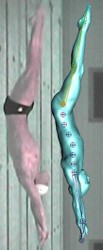 Originally, the position on the back was meant for relaxing. However, backstroke was included in the Olympic program as soon as at the second Olympic Games. At that time, the swimmers moved arms and legs jointly. Only at the 1912 Olympics, the winner in 100m, American Harry Hebner, swam so-called crawl-backstroke.
Originally, the position on the back was meant for relaxing. However, backstroke was included in the Olympic program as soon as at the second Olympic Games. At that time, the swimmers moved arms and legs jointly. Only at the 1912 Olympics, the winner in 100m, American Harry Hebner, swam so-called crawl-backstroke.
Body position
While backstroking, the shoulders are always slightly higher than the hips. Minor raise of hips is not considered a mistake. The angle between the longitudinal body axis and the surface is 5-10 degrees. The angle is wider than in crawl because the active kick is performed in upward direction and the reaction pushes hips down. Optimum immersion of the head is up to the ears. The swimmer faces upwards. The head is the most stable element. On the contrary, the shoulder axis swivels crossways within the range of 20-40 degrees.
Legs
Working with legs is of secondary significance in backstroke – correct movement of legs mainly secures the optimum position and prevents from moving side to side caused by arm recovery. Six-stroke leg kick is used. The range of the kick is 25-40 cm. The kick must not be too intensive. Legs cannot be bent in knees. Legs cannot get above the water; they only whirl slightly under the surface.
Arms
Arm movements can be divided into the stroke stage and the recovery stage.
Stroke Stage:
- the little finger immerse in the water first
- the arms is allowed to dive freely 15-30 cm under the surface
- shortly after the beginning of the stroke, the arms start to bend. Stroking with stretched arms would result in a zigzag movement.
- stroke with bent elbow (angle up to 100 degrees)
- shoulder axis turned crossways in the scope of 20-45 degrees
Recovery Stage:
- at the end of the stroke, active pressure is finished and the hand is passively pulled out of the water
- the arm is stretched during recovery and it moves along the line in vertical plane
- the speed of the recovery equals the speed of the stroke. The opposition of the arms in backstroke is bigger than in crawl
- immersing the hand is in the line of the shoulder
Breathing synchronization
The most frequent coordination pattern for backstroke is six-stroke crawl – there are six leg kicks per one arm cycle. The synchronization of the upper and lower extremities itself is mostly created unintentionally. Coordinating the rhythm of the movement is more evident than in crawl.
Free air passages during backstroke tempt to breath irregularly or breathe out insufficiently. However, just like in crawl, breathing out should follow the push and pressure phase of the arm stroke. Breathing in comes at the time of pulling the hand out of the water.
Butterfly Style
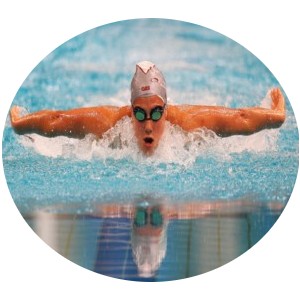 Butterfly is the most recent swimming style. It has developed from breaststroke but the biomechanics of individual movements draws more from crawl.
Butterfly is the most recent swimming style. It has developed from breaststroke but the biomechanics of individual movements draws more from crawl.
Originally, arms were recovered through air and there was one a little narrowed breaststroke kick. A change in the rules which made it possible to kick in vertical direction brought about further development of the technique and the emergence of the dolphin technique.
Body position
In butterfly, the whole body participates in leg movement by waving. The angle between the longitudinal body axis and the surface varies. During preparatory phase it is even negative and during stroke and recovery it is between 10 and 30 degrees. Body waving is closely related to the movements of upper and lower extremities.
Arms
Arm movements are similar to arm movements in crawl but they are performed synchronically and symmetrically. High position of elbows is important – as if the swimmer was trying to reach over a barrel.
Leg kick
When training with flutter board, dolphin kick is the fastest of all swimming styles. In butterfly, the first kick which contributes to forward movement comes at the moment when, affected by diving the arms, speed is the lowest. The second kick is performed in the last phase of arm stroke and is usually smaller. Its task is mainly to balance the effect of hip lowering in the last phase of arm stroke on the overall position. If left out, his lower too much. When moving upwards, legs are stretched until the middle of the upward movement. It is a mistake to bend the knees right at the beginning of the movement because it causes bigger resistance. Downward kick is at least two times faster than the upward movement.
Leg movements are not very much intensive so as not to generate too big resistance.
Synchronization and breathing
In butterfly, stable floating positions is not intentionally stuck to in order to be able to breathe in, recover arms forward and perform leg kicks in a better way. There is typical raising and lowering of the hips. During one arm stroke, there are two leg kicks. The first kick is performed when the arms dive, the other one when they are raised. We breathe in only during the second arm stroke at the end of the arm pressure phase. The inhalation must be as quick as possible.


